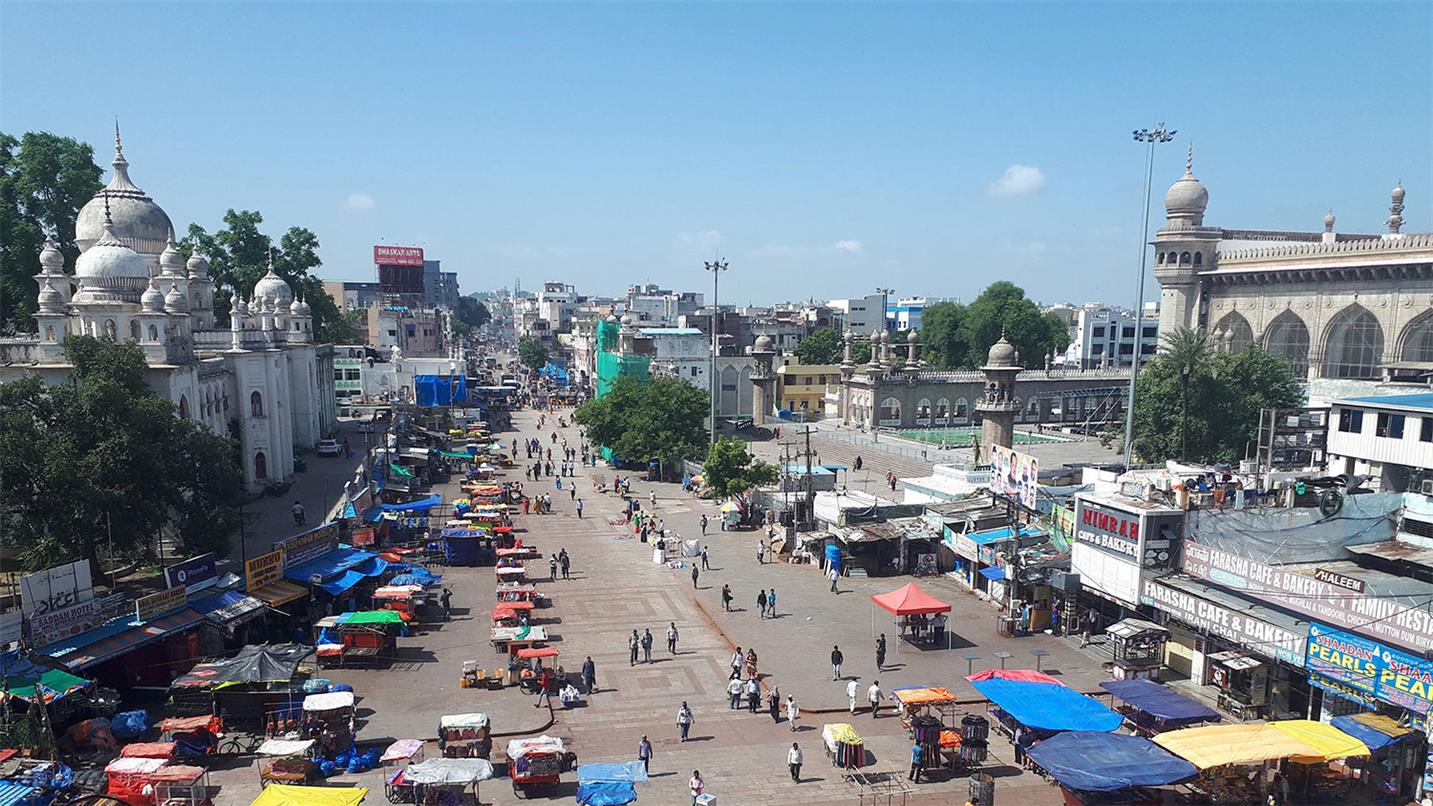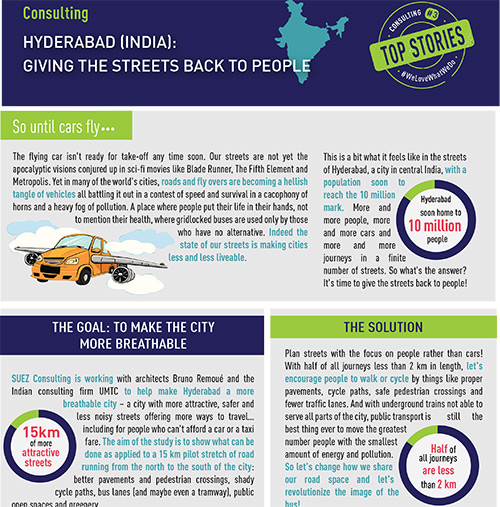
Air & Climate
Faced with the challenges of air quality and global warming, we have developed innovative and efficient solutions for public authorities and industry to measure, model and treat atmospheric emissions.

Located in central India, Hyderabad has almost 10 million inhabitants. It is the country’s sixth largest city in terms of population. Known as “Cyber City”, it is India’s second Silicon Valley after Bangalore, with its HITEC City biotechnological district and an information and communications technology centre.
Just like in many cities across the world, the streets of Hyderabad are seeing an increasing number of people, more and more cars and a growing number of journeys. And yet the streets cannot be expanded.
Thanks to funding from the French Development Agency and in coordination with the Telangana government, teams at SUEZ Consulting and their partners (the architect Bruno Remoué and the Indian consultancy firm UMTC) are helping Hyderabad to become a cleaner city, with more breathable air, more attractive, safer and quieter streets, and greater opportunities for mobility, even for those who cannot afford their own car or taxi fares.
The aim of the study is to show what could be done using a 15km pilot segment crossing the city from north to south: better pavements and pedestrian crossings, shady cycle paths, bus lanes (maybe even a tramway), public spaces, trees, etc.
50% of journeys cover a distance of less than 2km. People must be encouraged to walk and cycle, through better pavements, cycle paths, safe pedestrian crossings, fewer lanes for traffic.
Furthermore, public transport is still the best invention for transporting a maximum number of people with the minimum amount of energy and pollution. As the metro system cannot cover the whole city, it is vital that more street space is reserved for public transport.

Our challenge: changing mobility for better air quality